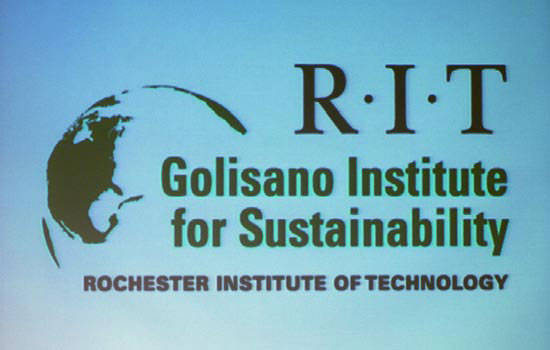Researchers prove trash 'recycling' could lead to energy independence
A new energy production method developed by a team of researchers at RIT and Purdue University could turn today’s trash into tomorrow’s energy.
Researchers are proposing a new “flexible” approach to producing alternative fuels that utilizes municipal solid waste, forest residues, sewage sludge and agricultural waste as sources for ethanol. The method could supply up to 20 percent of transportation fuels in the United States annually.
Thomas Seager, an associate professor in the Golisano Institute for Sustainability at RIT, is conducting the project with Fu Zhao, Dongyan Mu and P. Suresh Rao of Purdue University. Specifics of the new method were unveiled in a paper presented on Sept. 29 during the sixth Global Conference on Sustainable Product Development and Life Cycle Engineering in Busan, Korea.
“Producing ethanol using biowaste could greatly expand the sources for alternative fuel and reduce pressure on world agricultural production,” notes Seager. “Our research creates a new production model that utilizes current sources to produce energy more efficiently and with less overall cost.”
The proposal is an alternative to the conventional method of biofuel production, which currently uses corn grain as a feedstock. Increasing production of corn grain to meet increased biofuel needs poses a potential threat to the environment and has been linked to rising food prices.
The new method, called a flexible carbon-to-liquid fuel process, converts a variety of domestic biomass wastes, including municipal solid waste and food processing wastes to liquid transportation fuels, such as biodiesel. The process can efficiently produce biodiesel with the same quality as that generated from feedstocks. The method also captures excess emissions created through the production process for use in electricity generation.
“It is estimated that the United States generates 1.3 billion tons of biowaste annually, a plentiful energy source that we are currently underutilizing or throwing away,” Seager says. “Through this new production method we hope to provide an efficient avenue for transforming the ethanol production system in a way that utilizes this source and reduces reliance on corn and other feedstocks.”
The research team believes that mass production of biodiesel using this method could, based on current biowaste production, ultimately generate 78 million gallons per day or one-fifth of current transportation fuel needs.














